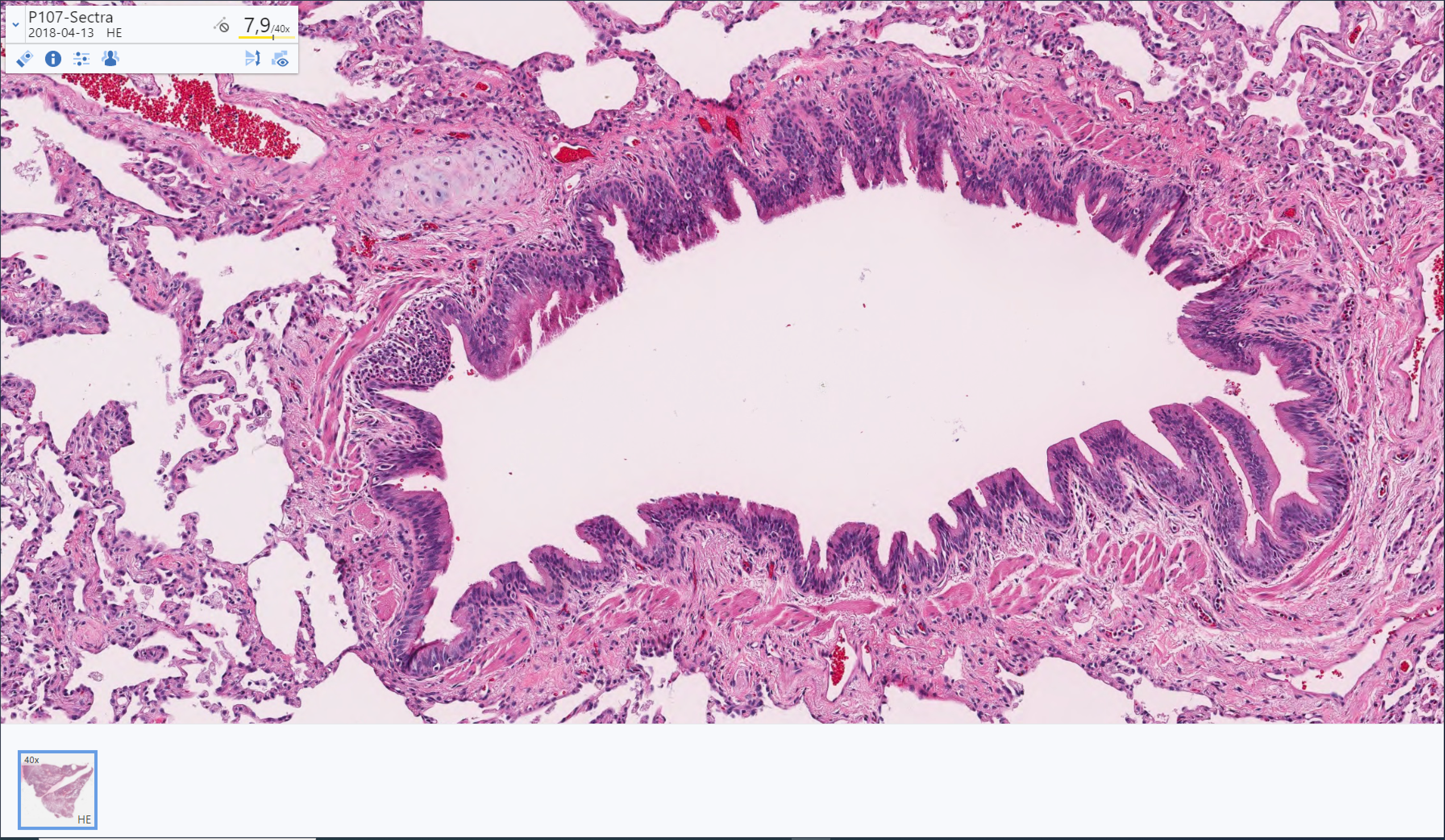- Scanners
DICOM enables your digital pathology platform to import images from any DICOM-compliant scanner so that the lab has the flexibility to add and replace scanners over time. - Telepathology
DICOM ensures that you can read images from other institutions that send images to your lab for review and that they can read your images. - Image analysis
Image analysis plays an important role in digital pathology. The DICOM working group 26 (DICOM WG26) has been working on the standard for annotations, an important aspect for image analysis. It is likely that integration with image analysis apps will be easier when DICOM is standardized and adoption speeds up. - Future proof
DICOM will future proof your imaging platform so that images will also be accessible many years from now, even from future platforms.
At least seven scanner brands can now deliver pathology images in DICOM. Three of them already have DICOM in production at clinical labs together with Sectra Digital Pathology Solution, and more are to come. Interoperability is hard to achieve without standards. That’s why DICOM is key.
In pathology imaging, DICOM is now making the leap into standard practice. Laboratories that use Sectra for digital pathology have started to scan and store whole slide images (WSI) in DICOM format as standard practice. In the case of Connectathons, multiple scanner vendors have shown that they can comply with the DICOM standard and three of them are currently connected with Sectra in clinical use, and more are to come! Sectra now has clinical proof that DICOM for WSI works in clinical practice and that the scanners used in Sectra’s imaging platform offer top performance. The image display is sometimes even faster than the proprietary formats from the same scanner vendor. Until now, Sectra has not seen any difference in the quality of DICOM images compared to the proprietary formats from the same scanner vendor.
I am proud that many scanner vendors turn to Sectra to verify their DICOM compliance in order to ensure success in clinical adoption.
DICOM has been the de facto standard within medical imaging for over 20 years. For digital pathology, the standard is technically different from other medical disciplines due to the unique character of the images. Even if the WSI standard has been set for many years, clinical adoption has been slow, and there are logical reasons for that.
One reason is that digital pathology has for many years focused on research, teaching, tumor boards and standalone image analysis applications. These are all use cases with limited scope where proprietary standalone solutions have been good enough and the need for interoperability has been limited.
Now that digital pathology is entering standard clinical practice at a rapid pace, the need for interoperability is critical. Interoperability is hard to achieve without standards, and that is why DICOM is key. Several different aspects are listed below to highlight some use cases.
Five years ago, the question was: why should I use DICOM for pathology? It seemed to be unproven without any real benefits. That has changed. Now the question is: is there any reason not to use DICOM when implementing digital pathology in standard practice? From Sectra’s perspective: There is no longer any reason to scan and store your pathology images in any other format than DICOM with the full image pyramid.
The work carried out by DICOM WG26 and Connectathons has been an important part of the development and adoption of DICOM, and Sectra continues to participate in standardization committees in order to drive industry implementation and clinical use. In addition, Sectra engages in discussions with scanner vendors to develop and verify interoperability in order to ensure ease of implementation for labs as they go digital. Today, at least seven brands can deliver DICOM images from their scanners, and more are to come. When your lab adopts digital pathology, make sure that your scanners, imaging systems and telepathology solutions are DICOM-compliant. That is key to ensuring interoperability at your lab.
In simple terms, the DICOM structure consists of three parts:
- Image standard,
- Structured meta data in the DICOM headers, and
- Transfer protocol of the images.
It is the responsibility of the scanner vendor to deliver images in DICOM format and to ensure image quality. At present, several scanner providers can deliver images in DICOM format including the full image pyramid as advised by DICOM WG26. This is the first and most important step towards achieving interoperability.
Note: This paper presents Sectra’s view of the current status of DICOM adoption in spring 2022. It is an update of the original paper from 2020. For an update, contact markus.ralund@sectra.com.
